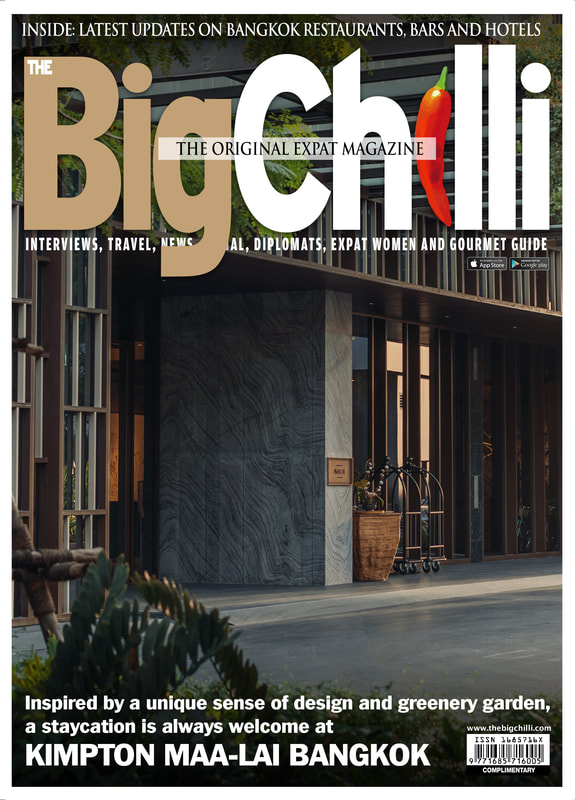HE Kesang Wangdi talks about his country’s unique approach to promoting happiness
By Maxmilian Wechsler
By Maxmilian Wechsler
| HE Kesang Wangdi, the ambassador of Bhutan to Thailand, is a fitting emissary for a nation which marks its country’s progress not on GDP, but on GNH (Gross National Happiness). The first time I came in contact with him was on December 12, 2012, at a reception at the Swissotel Nai Lert hosted by the Royal Bhutan Embassy to mark the Kingdom’s 105th National Day. The reception was attended by about 500 distinguished guests including Thai cabinet ministers, senior government officials, diplomats and business people. The event was a collaborative effort from the embassy, the Tourism Council of Bhutan, Druk Air (Royal Bhutan Airlines) and various travel agencies to showcase the country’s culture, cuisine and textiles. In his welcoming speech Mr Wangdi eloquently underscored his country’s rapid socioeconomic development and expressed his own happiness at the existing good relations between Bhutan and Thailand. |
The Bhutanese performers and artisans put on a remarkable show that impressed everyone. One ambassador was heard commenting to colleagues that it was “remarkable that such a small country could organize such a spectacular event,” and that Bhutan was a place he would very much like to visit. They all agreed, and clearly special credit for the success of the event goes to Mr Wangdi for his cheerful and energetic presentation on behalf of the idyllic mountain kingdom.
From farm boy to diplomat
Not long after the event, the ambassador gladly accepted an invitation for an interview, which took place under the portraits of two monarchs, HM Jigme Khesar Namgyel Wangchuck and HM King Bhumibol Adulyadej, at the tastefully appointed hall of the Bhutanese embassy chancery at the mission compound in Bangkok’s Huay Kwang district.
As is his custom, the ambassador was wearing the traditional national dress for men called gho, and also traditional handmade boots embroidered with beautiful coloured designs.
“I came from a small, modest and ordinary farming family in Bhutan,” the ambassador told me, when asked about his background. “I am one of the products of a government which holds education to be very important. In Bhutan it is up to you if and how you succeed, because the government creates enabling conditions for people to reach their aspirations and to achieve whatever they want. There are no limitations.
“I went through the education system and got selected for government service. I was educated in Bhutan, India and elsewhere. I entered government service in the early 1980s. When I started I worked in the capital of Bhutan, Thimphu. My first posting abroad was to India, and from there I went to the United States, Nepal and now to Thailand. I have been very fortunate, as have all those of my generation, because of a very fair system where people are given the opportunity to receive an education and pursue their dreams.
“I am married with two children; one is studying medicine in the United States and the other is a financial analyst for the investment arm of the Bhutanese government. My family also includes a small dog. I like reading, music and physical activities such as running, cycling, soccer and golf − but I am not the greatest golfer,” said the ambassador, smiling.
Coming to Thailand
Mr Wangdi arrived in Thailand for the first time when he assumed the position of ambassador in June 2011. He is also acting ambassador to Australia and Singapore. Asked how he can manage to represent his country in Australia all the way from Thailand, Mr Wangdi said: “I travel there as often as I can because we have a lot of work to do. Cooperation between our countries is growing. Australia is one of our earliest development partners. We have had technical cooperation with Australia for a long time and they have offered assistance and human resources in agriculture and other areas. There are also a lot of Bhutanese students studying in Australia.
“Bhutan recently established diplomatic relations with other Asian countries, including Indonesia, Myanmar and Vietnam. The government will soon nominate an ambassador to these nations. This embassy will perhaps look after them as well but this is still under discussion.
“My last assignment before coming here was as Director General of the Tourism Council of Bhutan. We give a lot of importance to tourism in Bhutan, and this position is directly under the prime minister. The tourism council consists of many cabinet ministers and also members of the private sector. We have many development options in tourism as well as in hydropower, but we are very careful in selecting which ones go forward. Our development philosophy hinges on the concept of gross national happiness, which we believe is more important than gross domestic product.”
This fascinating and enlightened perspective is officially pursued only in Bhutan, and it is reflected in all areas of government, business and society. It is a development model that measures the mental as well as material well-being of citizens. The objective is balanced development with the ultimate goal being the happiness of the people. The concept consists of four pillars: Socioeconomic Development, Promotion and Conservation of Culture, Environmental Protection and Good Governance. These pillars embody national and local values and aesthetics, as well as spiritual traditions. The philosophy of GNH is now being taken up by the United Nations and some other countries.
“We are coming out [of relative isolation] slowly and we are learning from everybody. They say, ‘if you copy from one it is plagiarizing; if, you copy from ten, it is research.’ So, we are doing a lot of research and taking good points from many countries. So, things in Bhutan are going very well,” the ambassador said.
Mr Wangdi did not formally request a posting in Thailand but he is delighted to be here. “In our system, ambassadors are nominated by the government, and confirmed and approved by the King. Even before the constitution was in place, this has always been the procedure. The ambassadorial term is usually three years, but it could be longer − four or even five years.
“Basically, I do what every ambassador does, and this consists of three basic functions. One is to promote friendship, cooperation and good will between our two countries − that is perhaps my main mandate, and it brings me to my second function, which is to deepen and broaden cooperation in the fields of commerce, trade, tourism, people-to-people contact, culture exchange and so on. My third, also very important, function is to look after the interest of the Bhutanese people in Thailand, whether they are residents, students or just passing through.
“Of course, as I am here among the diplomatic community in the metropolis of Bangkok, my purpose is also to build awareness about Bhutan, our culture and our GNH development philosophy − not only in this great nation but also with everyone in the diplomatic and expat communities here, as well as the other countries that I am assigned to.
“All of this keeps me very busy from morning to evening, and after the official workday I normally go out to interact and mingle – which is always a pleasure. In the evenings, I attend to social obligations like national day receptions,” the ambassador said.
Mr Wangdi said he wears the goh instead of a suit most of the time because it is part of the Bhutanese culture and tradition. “Every country has a culture which is unique, but Bhutan is a country where the culture is not only unique but living. It is practical and relevant in the modern context. Therefore, in Bhutan a great number of people wear the goh. It is very comfortable and suitable for work as well as celebrations or special events. As for the boots, several types are now made from different materials in Thailand. The ones I am wearing now are for a warmer climate and they come from Bhutan.”
Royal Development Projects
Since his arrival Mr Wangdi has been impressed with the development of Thailand, socially as well as economically. The infrastructure is good, the people are happy, and the communities are very strong, he said.
“I try to get out of Bangkok as much as possible. I have visited Chiang Mai, Chiang Rai, Nakhon Nayok, Ayutthaya and few other provinces because I want to learn and gain more experience about Thailand. For example, when I went to Chiang Mai and Chiang Rai on one of my first visits outside Bangkok, I visited the Royal Development Projects (RDP) that HM King Bhumibol Adulyadej has promoted for many years.”
The Royal Project was initiated by the Thai King in 1969 to encourage hill tribe villagers to shift from the cultivation of opium poppy to alternative crops. The project was also intended as a highland agricultural development center.
“These are people-oriented policies,” said Mr Wangdi. “People are not only given assistance or handouts, they are given the tools, knowledge and support to improve their farming and productivity and to maintain their culture. I have seen with my own eyes how very successful the RDPs are in Chiang Mai and Chiang Rai. The communities involved are thriving, and these good practices are also replicated outside the communities.
“We are collaborating with the RDP organization in Bhutan as well. I have met with HSH Prince Bhisadej Rajani, the Chairman of the Royal Project Foundation, and he has visited Bhutan many times. Through him we have replicated some of the successes here. He is well-educated, committed, hands-on and a very good representative of HM the King. I really admire him. We are collaborating closely and, in fact, I hope that he will be visiting Bhutan again soon. I have also met with the Director-General of the RDP and other officials,” said the ambassador.
“We in Bhutan are learning from the RDP not only how to produce, but also everything concerning the supply chain, because our farmers don’t have access to markets. It is a very inspiring project, teaching how you market and package produce, and so on. We need to know all of this. For us it is not only a curiosity. We are very happy because the priorities are similar to our own, to assist our poor people. In Bhutan, agriculture is a very important priority to promote sustainable development based on GNH.”
Relationship between Bhutan and Thailand
Formal diplomatic relations between Bhutan and Thailand were established in November 1989, although contacts between the royal families of the two countries were established much earlier.
A resident embassy was established in Bangkok in the Sukhumvit area in July 1997. “We moved to this location about ten years ago. We bought this large – by Bhutanese standards – property because we believed that our bilateral relations will go from strength to strength, that collaboration on trade and commerce will flourish and there will be many functions to attend. We also bought ten good houses not far from the embassy where our staff live. I live outside the embassy as well, but we are going to construct an ambassadorial residence here in the future. There are about two dozen people working at the embassy, nine Bhutanese and the rest Thais. In fact, this is Bhutan’s largest embassy.
“At this time there is no Thai embassy in Bhutan. This is the responsibility of the Thai ambassador to Bangladesh. There is an honorary Thai consul in Bhutan, Mr Dasho Ugen Tsechup Dorji, a Bhutanese businessman who is the Vice Chairman of the Singye Group of Companies. We collaborate with him closely. We used to have honorary consul in Thailand but he finished his duty. We are planning to appoint one or two in the future.
“The foundations of the relationship between Bhutan and Thailand are very strong, largely because there are some striking similarities between our two countries. One is that we have a common spiritual heritage. The second is the deep reverence for the institution of the monarchy. Thirdly, in both countries tradition and culture are very important. Finally, both countries have never surrendered sovereignty to another country. Because of that historical basis of always being independent, our peoples are peace loving, forward looking, confident and very friendly. These four similarities underpin our relations.
“Moreover, our respective royal families have always held very high esteem, affection and good will for each other. This has resulted in the exchange of many royal visits. HRH Crown Prince Maha Vajiralongkorn, HRH Princes Maha Chakri Sirindhorn, HRH Princess Chulabhorn Walailak and late HRH Princess Galyani Vadhana have all visited Bhutan. From Bhutan, among others, Thailand was visited by our King when he was Crown Prince, with his wife Queen Jetsun Pema and the Queen Mother, Ashi Tsehering Pem Wangchuk.
“We also have a very good relationship on the government level, with many top officials from both sides making visits. Bhutan and Thailand have an agreement called the Comprehensive Framework Agreement for Cooperation and it covers many areas, mainly trade, commerce, investment, human resources development, culture, religion, health, agriculture, tourism, civil aviation and consular matters. We just had a very successful annual meeting in March under this framework. Bilateral cooperation is also managed through a diverse array of consultations at the ministerial level.
“Assistance from Thailand has mainly been in the field of human resource development. Thailand’s assistance began in the 1980s under the ‘Thai International Development Cooperation Agency’ (TICA) in the areas of rural development, agriculture extension, health, education and private sector development. Thailand ranks third, after India and Australia, in assisting Bhutanese students,” Mr Wangdi said.
“The Royal Civil Service in Bhutan and the TICA signed an agreement to provide scholarships to Bhutanese students for short and long-term training and study in Thailand at institutions like Naresuan University, which offers 10 scholarships annually for Bhutanese students. The School Agriculture Programme is a collaborative project for youth development between Thailand and Bhutan, under the patronage of HRH Princess Maha Chakri Sirindhorn. Another project, launched in 2007 by the Ministry of Education and World Food Program, assists school food projects in Bhutan.
“There is also an exchange of volunteers between the two countries. Thai volunteers have been fielded in remote corners of Bhutan and have worked in vocational institutes, and Bhutan has also sent vocational teachers to Thailand.
“Thailand is the third largest trading partner for Bhutan. A trade agreement currently under negotiation is expected to boost bilateral trade, which has increased since Druk Air started flights between Bangkok and Paro in 1988. Imports by Bhutan range from basic items like processed foods and garments to electronic and aircraft parts. Bhutan’s export sector is still at a nascent stage.
“The two kingdoms have collaborated in the health sector since 1987, and there is significant cooperation in agriculture between the two countries. Bhutan participated in the International Horticultural Exposition in Chiang Mai from November 2006 to January 2007. His Majesty the King of Bhutan visited the exposition site during his visit to Thailand as the Crown Prince in November 2006. Bhutan also participated in the Royal Flora Ratchaphruek 2011, Chiang Mai, from December 2011 to March 2012.
From farm boy to diplomat
Not long after the event, the ambassador gladly accepted an invitation for an interview, which took place under the portraits of two monarchs, HM Jigme Khesar Namgyel Wangchuck and HM King Bhumibol Adulyadej, at the tastefully appointed hall of the Bhutanese embassy chancery at the mission compound in Bangkok’s Huay Kwang district.
As is his custom, the ambassador was wearing the traditional national dress for men called gho, and also traditional handmade boots embroidered with beautiful coloured designs.
“I came from a small, modest and ordinary farming family in Bhutan,” the ambassador told me, when asked about his background. “I am one of the products of a government which holds education to be very important. In Bhutan it is up to you if and how you succeed, because the government creates enabling conditions for people to reach their aspirations and to achieve whatever they want. There are no limitations.
“I went through the education system and got selected for government service. I was educated in Bhutan, India and elsewhere. I entered government service in the early 1980s. When I started I worked in the capital of Bhutan, Thimphu. My first posting abroad was to India, and from there I went to the United States, Nepal and now to Thailand. I have been very fortunate, as have all those of my generation, because of a very fair system where people are given the opportunity to receive an education and pursue their dreams.
“I am married with two children; one is studying medicine in the United States and the other is a financial analyst for the investment arm of the Bhutanese government. My family also includes a small dog. I like reading, music and physical activities such as running, cycling, soccer and golf − but I am not the greatest golfer,” said the ambassador, smiling.
Coming to Thailand
Mr Wangdi arrived in Thailand for the first time when he assumed the position of ambassador in June 2011. He is also acting ambassador to Australia and Singapore. Asked how he can manage to represent his country in Australia all the way from Thailand, Mr Wangdi said: “I travel there as often as I can because we have a lot of work to do. Cooperation between our countries is growing. Australia is one of our earliest development partners. We have had technical cooperation with Australia for a long time and they have offered assistance and human resources in agriculture and other areas. There are also a lot of Bhutanese students studying in Australia.
“Bhutan recently established diplomatic relations with other Asian countries, including Indonesia, Myanmar and Vietnam. The government will soon nominate an ambassador to these nations. This embassy will perhaps look after them as well but this is still under discussion.
“My last assignment before coming here was as Director General of the Tourism Council of Bhutan. We give a lot of importance to tourism in Bhutan, and this position is directly under the prime minister. The tourism council consists of many cabinet ministers and also members of the private sector. We have many development options in tourism as well as in hydropower, but we are very careful in selecting which ones go forward. Our development philosophy hinges on the concept of gross national happiness, which we believe is more important than gross domestic product.”
This fascinating and enlightened perspective is officially pursued only in Bhutan, and it is reflected in all areas of government, business and society. It is a development model that measures the mental as well as material well-being of citizens. The objective is balanced development with the ultimate goal being the happiness of the people. The concept consists of four pillars: Socioeconomic Development, Promotion and Conservation of Culture, Environmental Protection and Good Governance. These pillars embody national and local values and aesthetics, as well as spiritual traditions. The philosophy of GNH is now being taken up by the United Nations and some other countries.
“We are coming out [of relative isolation] slowly and we are learning from everybody. They say, ‘if you copy from one it is plagiarizing; if, you copy from ten, it is research.’ So, we are doing a lot of research and taking good points from many countries. So, things in Bhutan are going very well,” the ambassador said.
Mr Wangdi did not formally request a posting in Thailand but he is delighted to be here. “In our system, ambassadors are nominated by the government, and confirmed and approved by the King. Even before the constitution was in place, this has always been the procedure. The ambassadorial term is usually three years, but it could be longer − four or even five years.
“Basically, I do what every ambassador does, and this consists of three basic functions. One is to promote friendship, cooperation and good will between our two countries − that is perhaps my main mandate, and it brings me to my second function, which is to deepen and broaden cooperation in the fields of commerce, trade, tourism, people-to-people contact, culture exchange and so on. My third, also very important, function is to look after the interest of the Bhutanese people in Thailand, whether they are residents, students or just passing through.
“Of course, as I am here among the diplomatic community in the metropolis of Bangkok, my purpose is also to build awareness about Bhutan, our culture and our GNH development philosophy − not only in this great nation but also with everyone in the diplomatic and expat communities here, as well as the other countries that I am assigned to.
“All of this keeps me very busy from morning to evening, and after the official workday I normally go out to interact and mingle – which is always a pleasure. In the evenings, I attend to social obligations like national day receptions,” the ambassador said.
Mr Wangdi said he wears the goh instead of a suit most of the time because it is part of the Bhutanese culture and tradition. “Every country has a culture which is unique, but Bhutan is a country where the culture is not only unique but living. It is practical and relevant in the modern context. Therefore, in Bhutan a great number of people wear the goh. It is very comfortable and suitable for work as well as celebrations or special events. As for the boots, several types are now made from different materials in Thailand. The ones I am wearing now are for a warmer climate and they come from Bhutan.”
Royal Development Projects
Since his arrival Mr Wangdi has been impressed with the development of Thailand, socially as well as economically. The infrastructure is good, the people are happy, and the communities are very strong, he said.
“I try to get out of Bangkok as much as possible. I have visited Chiang Mai, Chiang Rai, Nakhon Nayok, Ayutthaya and few other provinces because I want to learn and gain more experience about Thailand. For example, when I went to Chiang Mai and Chiang Rai on one of my first visits outside Bangkok, I visited the Royal Development Projects (RDP) that HM King Bhumibol Adulyadej has promoted for many years.”
The Royal Project was initiated by the Thai King in 1969 to encourage hill tribe villagers to shift from the cultivation of opium poppy to alternative crops. The project was also intended as a highland agricultural development center.
“These are people-oriented policies,” said Mr Wangdi. “People are not only given assistance or handouts, they are given the tools, knowledge and support to improve their farming and productivity and to maintain their culture. I have seen with my own eyes how very successful the RDPs are in Chiang Mai and Chiang Rai. The communities involved are thriving, and these good practices are also replicated outside the communities.
“We are collaborating with the RDP organization in Bhutan as well. I have met with HSH Prince Bhisadej Rajani, the Chairman of the Royal Project Foundation, and he has visited Bhutan many times. Through him we have replicated some of the successes here. He is well-educated, committed, hands-on and a very good representative of HM the King. I really admire him. We are collaborating closely and, in fact, I hope that he will be visiting Bhutan again soon. I have also met with the Director-General of the RDP and other officials,” said the ambassador.
“We in Bhutan are learning from the RDP not only how to produce, but also everything concerning the supply chain, because our farmers don’t have access to markets. It is a very inspiring project, teaching how you market and package produce, and so on. We need to know all of this. For us it is not only a curiosity. We are very happy because the priorities are similar to our own, to assist our poor people. In Bhutan, agriculture is a very important priority to promote sustainable development based on GNH.”
Relationship between Bhutan and Thailand
Formal diplomatic relations between Bhutan and Thailand were established in November 1989, although contacts between the royal families of the two countries were established much earlier.
A resident embassy was established in Bangkok in the Sukhumvit area in July 1997. “We moved to this location about ten years ago. We bought this large – by Bhutanese standards – property because we believed that our bilateral relations will go from strength to strength, that collaboration on trade and commerce will flourish and there will be many functions to attend. We also bought ten good houses not far from the embassy where our staff live. I live outside the embassy as well, but we are going to construct an ambassadorial residence here in the future. There are about two dozen people working at the embassy, nine Bhutanese and the rest Thais. In fact, this is Bhutan’s largest embassy.
“At this time there is no Thai embassy in Bhutan. This is the responsibility of the Thai ambassador to Bangladesh. There is an honorary Thai consul in Bhutan, Mr Dasho Ugen Tsechup Dorji, a Bhutanese businessman who is the Vice Chairman of the Singye Group of Companies. We collaborate with him closely. We used to have honorary consul in Thailand but he finished his duty. We are planning to appoint one or two in the future.
“The foundations of the relationship between Bhutan and Thailand are very strong, largely because there are some striking similarities between our two countries. One is that we have a common spiritual heritage. The second is the deep reverence for the institution of the monarchy. Thirdly, in both countries tradition and culture are very important. Finally, both countries have never surrendered sovereignty to another country. Because of that historical basis of always being independent, our peoples are peace loving, forward looking, confident and very friendly. These four similarities underpin our relations.
“Moreover, our respective royal families have always held very high esteem, affection and good will for each other. This has resulted in the exchange of many royal visits. HRH Crown Prince Maha Vajiralongkorn, HRH Princes Maha Chakri Sirindhorn, HRH Princess Chulabhorn Walailak and late HRH Princess Galyani Vadhana have all visited Bhutan. From Bhutan, among others, Thailand was visited by our King when he was Crown Prince, with his wife Queen Jetsun Pema and the Queen Mother, Ashi Tsehering Pem Wangchuk.
“We also have a very good relationship on the government level, with many top officials from both sides making visits. Bhutan and Thailand have an agreement called the Comprehensive Framework Agreement for Cooperation and it covers many areas, mainly trade, commerce, investment, human resources development, culture, religion, health, agriculture, tourism, civil aviation and consular matters. We just had a very successful annual meeting in March under this framework. Bilateral cooperation is also managed through a diverse array of consultations at the ministerial level.
“Assistance from Thailand has mainly been in the field of human resource development. Thailand’s assistance began in the 1980s under the ‘Thai International Development Cooperation Agency’ (TICA) in the areas of rural development, agriculture extension, health, education and private sector development. Thailand ranks third, after India and Australia, in assisting Bhutanese students,” Mr Wangdi said.
“The Royal Civil Service in Bhutan and the TICA signed an agreement to provide scholarships to Bhutanese students for short and long-term training and study in Thailand at institutions like Naresuan University, which offers 10 scholarships annually for Bhutanese students. The School Agriculture Programme is a collaborative project for youth development between Thailand and Bhutan, under the patronage of HRH Princess Maha Chakri Sirindhorn. Another project, launched in 2007 by the Ministry of Education and World Food Program, assists school food projects in Bhutan.
“There is also an exchange of volunteers between the two countries. Thai volunteers have been fielded in remote corners of Bhutan and have worked in vocational institutes, and Bhutan has also sent vocational teachers to Thailand.
“Thailand is the third largest trading partner for Bhutan. A trade agreement currently under negotiation is expected to boost bilateral trade, which has increased since Druk Air started flights between Bangkok and Paro in 1988. Imports by Bhutan range from basic items like processed foods and garments to electronic and aircraft parts. Bhutan’s export sector is still at a nascent stage.
“The two kingdoms have collaborated in the health sector since 1987, and there is significant cooperation in agriculture between the two countries. Bhutan participated in the International Horticultural Exposition in Chiang Mai from November 2006 to January 2007. His Majesty the King of Bhutan visited the exposition site during his visit to Thailand as the Crown Prince in November 2006. Bhutan also participated in the Royal Flora Ratchaphruek 2011, Chiang Mai, from December 2011 to March 2012.
Bhutan at a glance
THE Kingdom of Bhutan is a small country with a total area of 38,394 square kilometers (about the size of Switzerland), squeezed between China and India. It is located in the heart of the high Himalayas. The country is divided into 20 districts and 205 counties. The altitude varies from about 100 meters above sea level in the south to over 7,500 meters in the north. Gangkhar Puensum, at around 7,570 meters, is the Bhutan’s highest mountain and the world’s highest unclimbed mountain since the Bhutanese declared it off limits for climbers in 1994. The northern part of the country is under snow for the whole year.
The population of Bhutan is over 700,000 people, with about 79 percent living in rural areas. Thimphu is the capital and largest city. The official language is Dzongkha, and English is widely spoken.
Bhutan has a democratic constitutional monarchy. With a development philosophy based on Gross National Happiness (GNH), the Kingdom is becoming increasingly known for its dynamic leadership. It is an extraordinary country with architecture and fortresses the likes of which can not be seen anywhere else. The people are hospitable, most of them devoted Buddhists, and the unique cultural heritage has been kept intact.
Modernization has had a relatively late start in Bhutan, but there have been some striking achievements. Bhutan is now connected with roads, electricity is much more available and communications systems span most of the country and connect it to the outside world.
THE Kingdom of Bhutan is a small country with a total area of 38,394 square kilometers (about the size of Switzerland), squeezed between China and India. It is located in the heart of the high Himalayas. The country is divided into 20 districts and 205 counties. The altitude varies from about 100 meters above sea level in the south to over 7,500 meters in the north. Gangkhar Puensum, at around 7,570 meters, is the Bhutan’s highest mountain and the world’s highest unclimbed mountain since the Bhutanese declared it off limits for climbers in 1994. The northern part of the country is under snow for the whole year.
The population of Bhutan is over 700,000 people, with about 79 percent living in rural areas. Thimphu is the capital and largest city. The official language is Dzongkha, and English is widely spoken.
Bhutan has a democratic constitutional monarchy. With a development philosophy based on Gross National Happiness (GNH), the Kingdom is becoming increasingly known for its dynamic leadership. It is an extraordinary country with architecture and fortresses the likes of which can not be seen anywhere else. The people are hospitable, most of them devoted Buddhists, and the unique cultural heritage has been kept intact.
Modernization has had a relatively late start in Bhutan, but there have been some striking achievements. Bhutan is now connected with roads, electricity is much more available and communications systems span most of the country and connect it to the outside world.
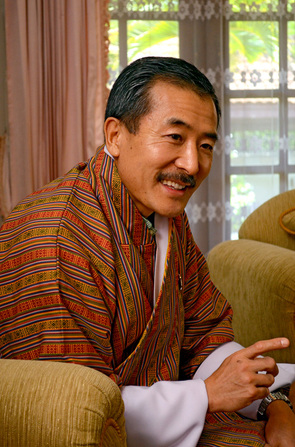
Tourism
“Tourism is another important sector for cooperation. Thailand is one of the top countries visited by Bhutanese people. I believe there were more than 20,000 in 2012. As for Thai visitors to Bhutan, they are among the top five, but I would like to make it more. About 3,500 Thais visited Bhutan in 2012. Americans comprise the biggest group of tourists to Bhutan.”
The Ambassador then explained in detail some aspects of tourism in his country: “Bhutan is promoting sustainable tourism. We are not into a mass tourism. For the people who come to Bhutan, we would like to offer a wonderful and authentic experience. We cannot be a destination for mass tourism because we have a limited capacity due to the culture, logistics and environment. That’s why we have opted for high-end tourism. The way we do that is to offer a minimum expenditure package. To apply for this anyone can visit the Tourism Council of Bhutan website (www.tourism.gov.bt) or contact a local travel agent. For a fixed price, tourists are entitled to accommodation at three-star and up hotels. They get food, accommodation, transportation and guides.
“People sometimes say it is expensive to visit Bhutan, but this is the result of a communication gap, because everything is inclusive. In some seasons the minimum expenditure is US$200 per day and in some seasons US$ 250, but again, this is inclusive of everything, and a certain portion of that, about US$65, goes to infrastructure and socio-economic development.”
About Thailand
“Bhutanese visitors to Thailand are invariably impressed by the warmth of their Thai counterparts, and this certainly goes for me as well. People are very kind to me here and I have made many good friends, within and outside of the diplomatic community. I take their friendship and good will as a reflection of their esteem for my country. I like the Thai culture and food, but most of all I like the friendliness and courtesy of the Thai people. They are very hospitable and genuine.”
“Tourism is another important sector for cooperation. Thailand is one of the top countries visited by Bhutanese people. I believe there were more than 20,000 in 2012. As for Thai visitors to Bhutan, they are among the top five, but I would like to make it more. About 3,500 Thais visited Bhutan in 2012. Americans comprise the biggest group of tourists to Bhutan.”
The Ambassador then explained in detail some aspects of tourism in his country: “Bhutan is promoting sustainable tourism. We are not into a mass tourism. For the people who come to Bhutan, we would like to offer a wonderful and authentic experience. We cannot be a destination for mass tourism because we have a limited capacity due to the culture, logistics and environment. That’s why we have opted for high-end tourism. The way we do that is to offer a minimum expenditure package. To apply for this anyone can visit the Tourism Council of Bhutan website (www.tourism.gov.bt) or contact a local travel agent. For a fixed price, tourists are entitled to accommodation at three-star and up hotels. They get food, accommodation, transportation and guides.
“People sometimes say it is expensive to visit Bhutan, but this is the result of a communication gap, because everything is inclusive. In some seasons the minimum expenditure is US$200 per day and in some seasons US$ 250, but again, this is inclusive of everything, and a certain portion of that, about US$65, goes to infrastructure and socio-economic development.”
About Thailand
“Bhutanese visitors to Thailand are invariably impressed by the warmth of their Thai counterparts, and this certainly goes for me as well. People are very kind to me here and I have made many good friends, within and outside of the diplomatic community. I take their friendship and good will as a reflection of their esteem for my country. I like the Thai culture and food, but most of all I like the friendliness and courtesy of the Thai people. They are very hospitable and genuine.”

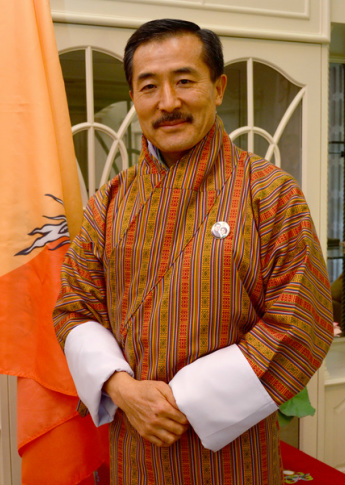
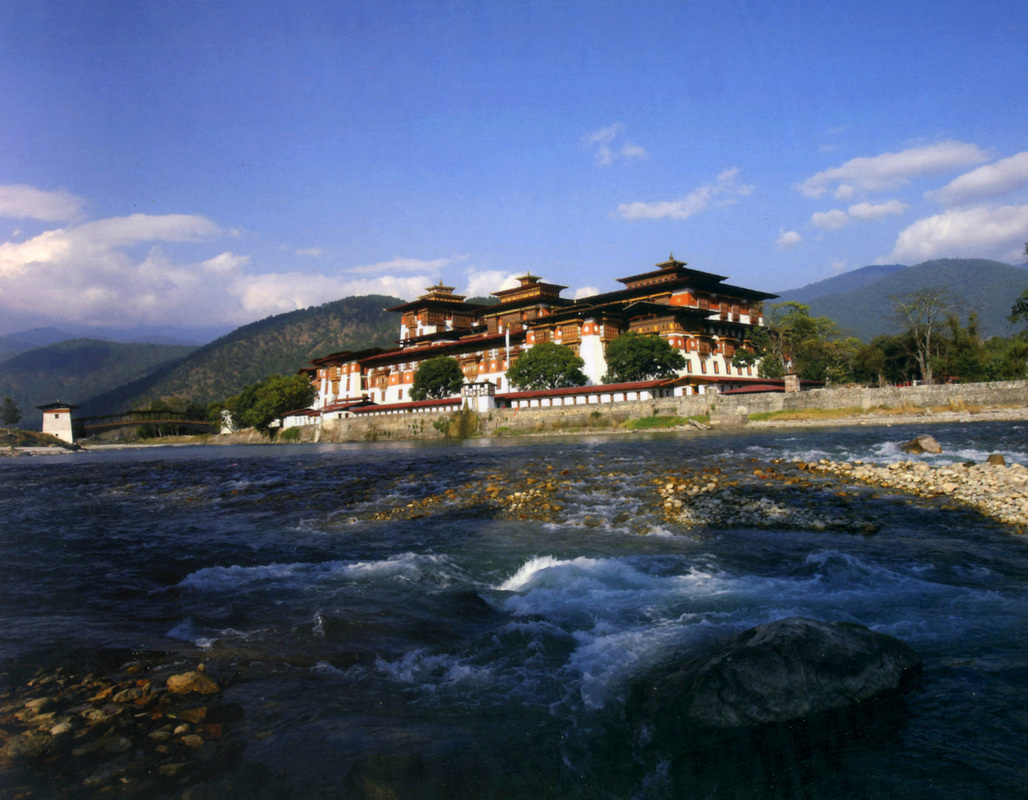
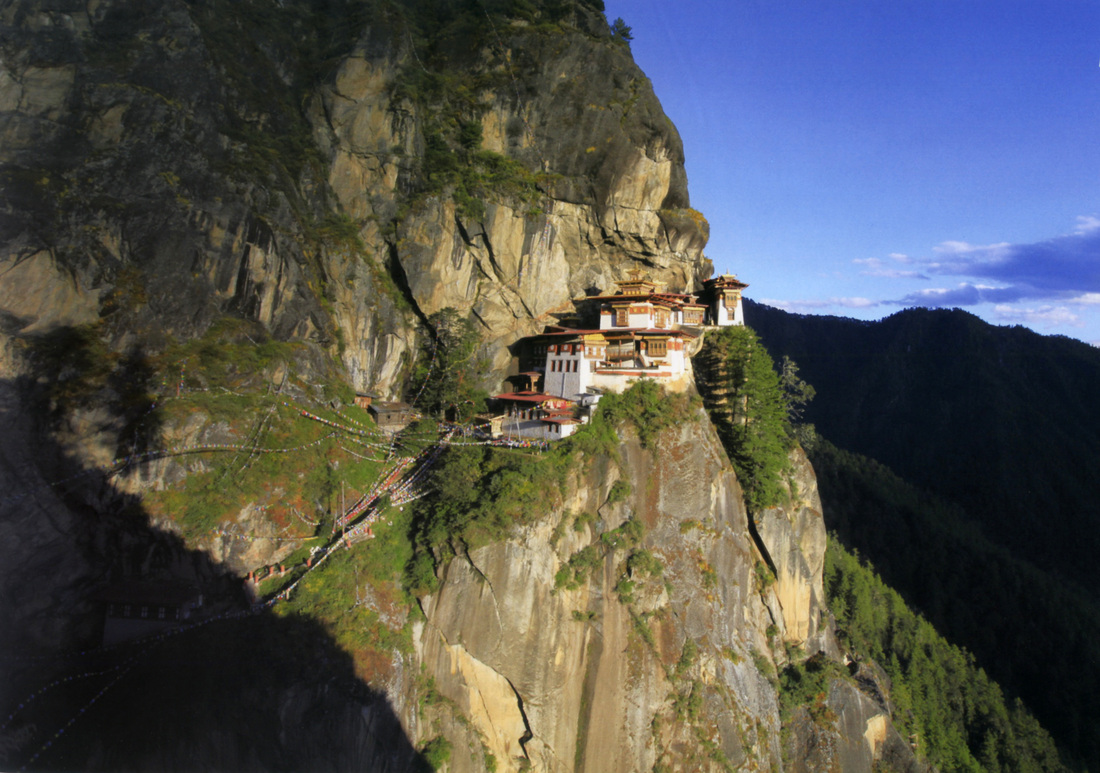
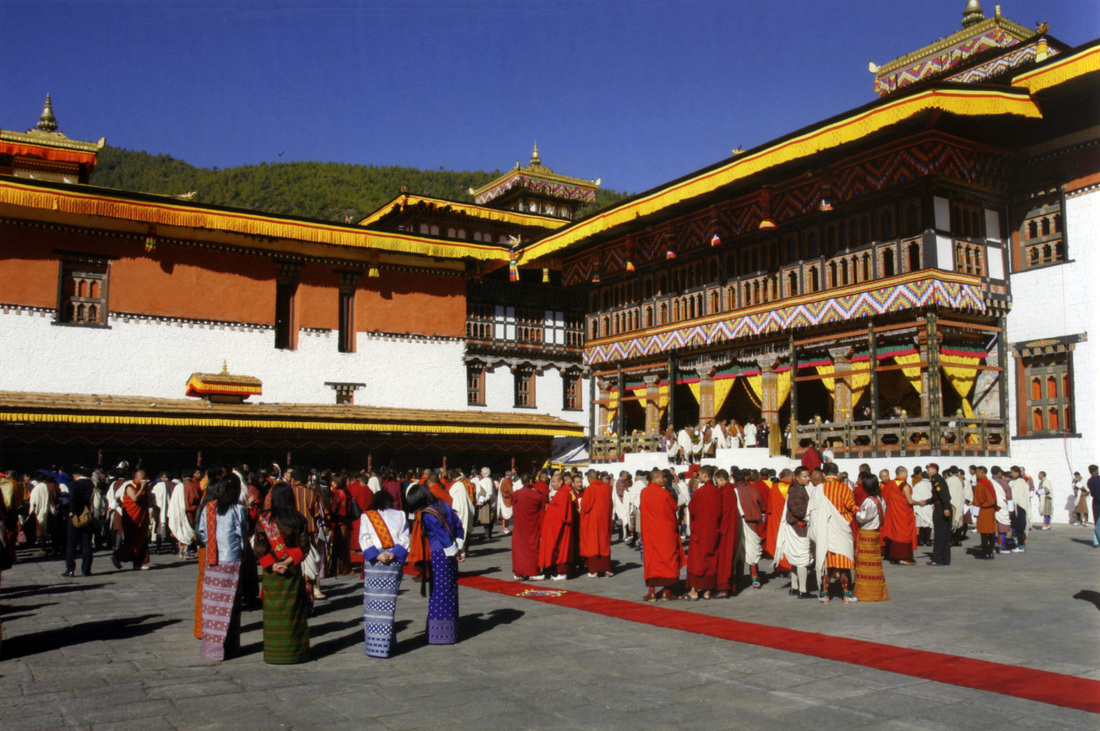
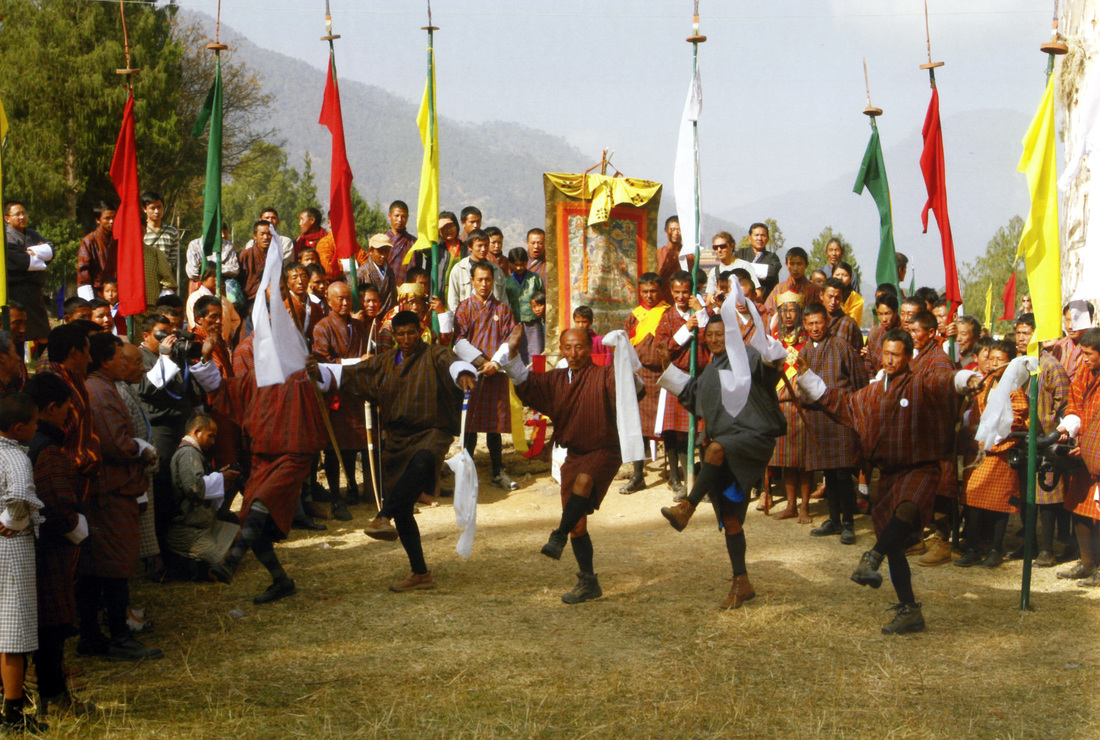
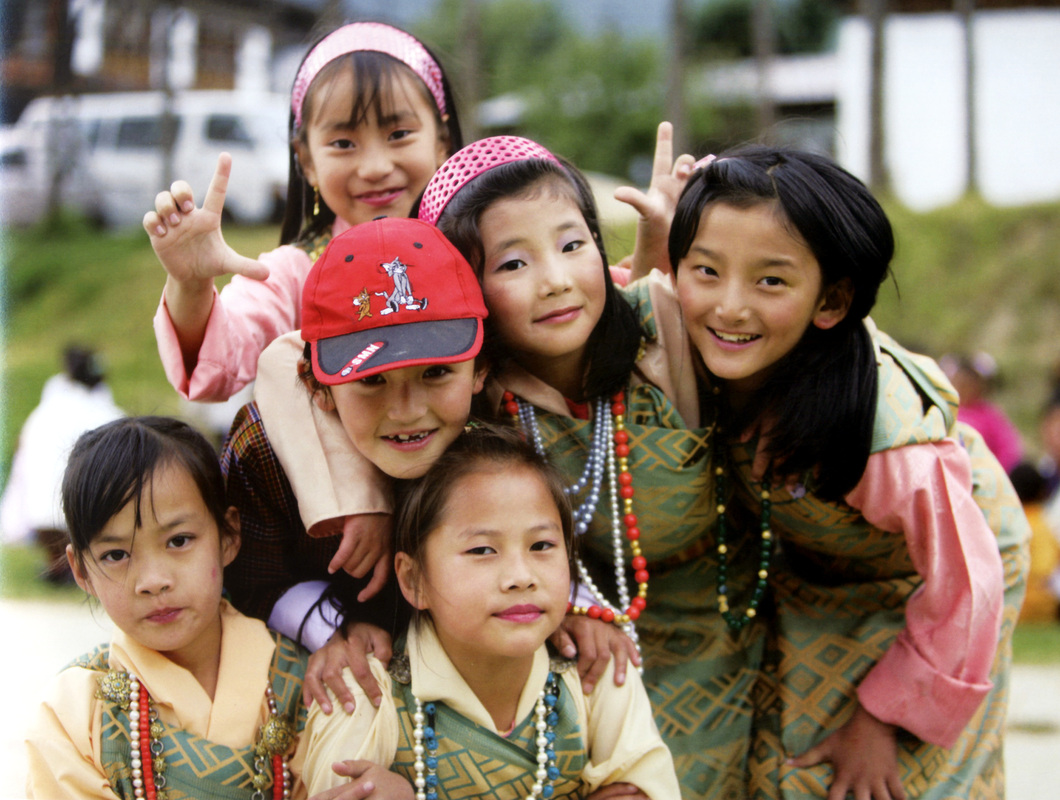
 RSS Feed
RSS Feed





